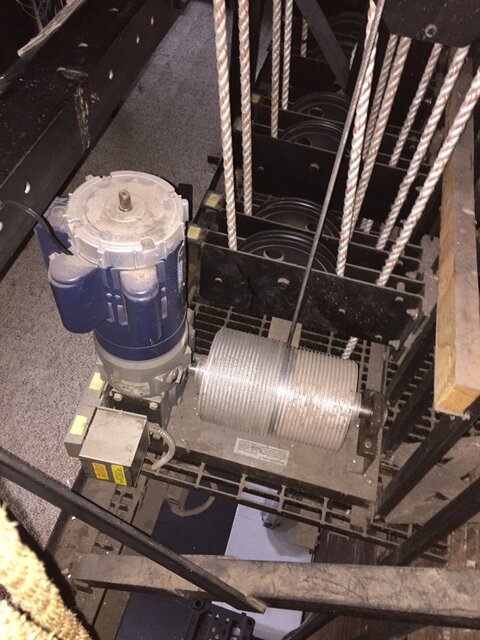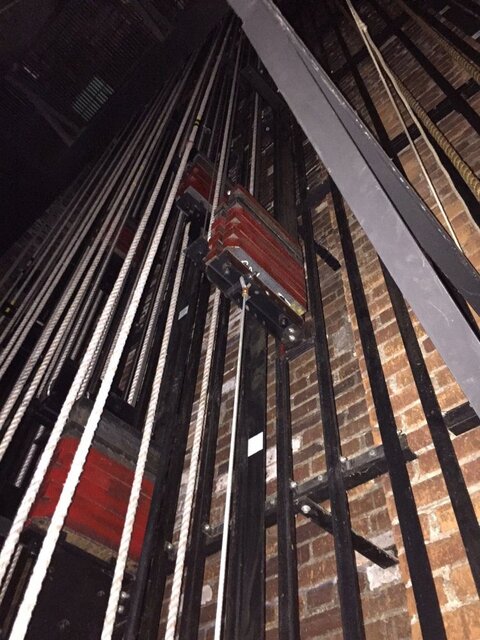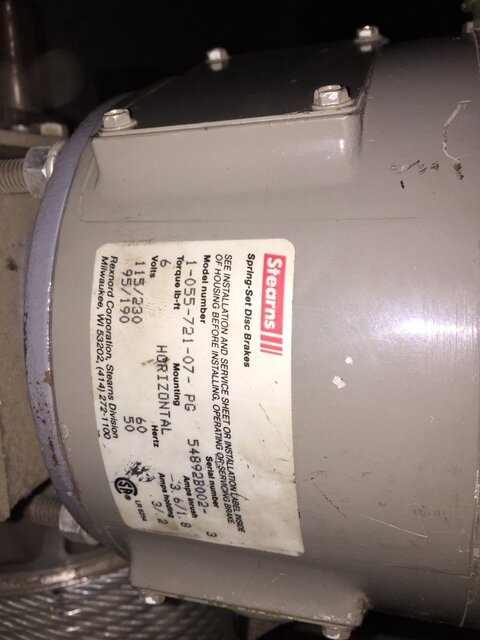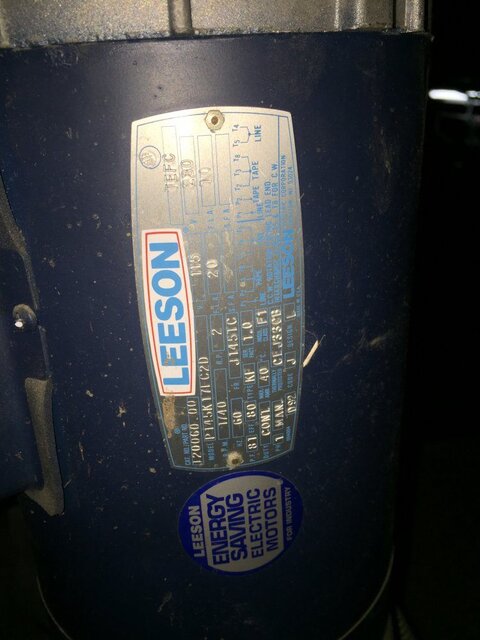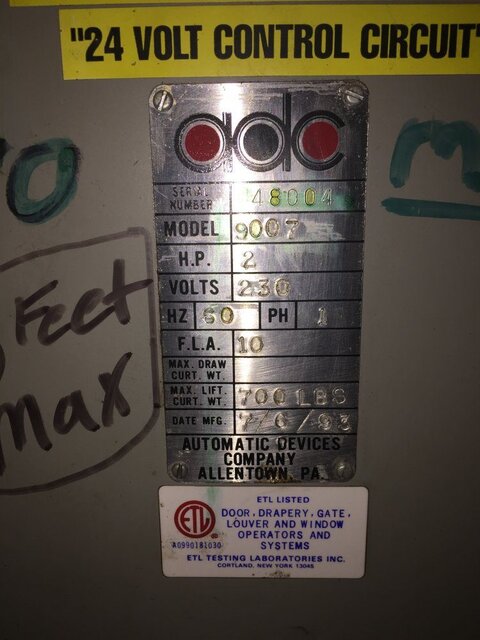TLDR warning firmly in place.
Forewarned is four armed. I'll tell a tale, I believe I recall posting of it here before.
@BillConnerFASTC Your comment excerpted from above Re: "
curtains, which are more tolerant to hard stops and starts" reminds me of a
venue in Hamilton Ontario, one which opened in 1991 to narrow down the options, was rigged by a quality US based rigging installer but the owners chose to order and import all of their
soft goods themselves from a very reputable
soft goods supplier in England under an
extremely attractive preferential trade deal. The riggers completed their installation employing several of my local IA brothers and were fully finished and off site at least a week prior to the arrival of the
soft goods. This was brand new construction from the foundations on up. The
cyc' was delivered with white ties, the center marked, the center
grommet a different color and the center tie a different color as well.
The legs were an excellent quality, heavy weight, black
velour with chains a couple of inches above their bottoms and sensible black ties. In the case of borders and full width blacks, black ties were fitted, and the centers were
identified similarly to the
cyc'.
The prosc', at 27' was quite high with the
house curtain tall enough to
cover sight-lines and supplied in an extremely heavy orange
velour c/w a stitched in
lining and in two over-lapping halves to work with the flown traveller
track so it could serve as both a
guillotine and / or a traveller upon demand.
Bottom Line: This was one
VERY HEAVY lump of fabric and everyone was relieved it shipped from England as two packages.
The fabricators had calculated the weight in
advance and the rigging suppliers were well aware of it. To their credit, they supplied a traveller
track capable of dealing with the weight and hung it on a trussed pipe to minimize flexing when the curtain was being operated as a traveller with most of its weight out at the ends of the pipe while the curtain is open.
As the curtain was going to be SO HEAVY and as the theater hoped to operate many performances without having to employ one or more IA brothers on the
fly floor for simple shows where the only pipe flying was the
house curtain, the owners chose to spend the extra coin for a variable frequency motor and drive (which unfortunately screamed like a banshee but that's another tale) and the
soft goods fabricators, fully comprehending the weight of their lined curtain, wisely went with grommets capable of the load and double grommets at all four ends, both halves, to withstand the extra stresses so often imposed upon the ends. The fabricators suggested the provision of short lengths of chain to link the curtain to the traveller
track but the owners figured they could save a few pennies by providing their own chains locally rather than shipping them from England. The theater company had performed in Hamilton for decades and in Ottawa prior to that but had always performed in rented facilities thus neither having owned a
venue before nor dealt with a facility with a
grid and single
purchase counter-weight
system.
You can probably see where this is going. You know how it goes when you're young, impetuous, ready to take the world by storm and CAN'T WAIT to
play with your new toys.
About a week before the
curtains arrived, the Head LX (That'd be moi before I became
blind and still had a life) had ordered and taken delivery of several hundred Meters of 3/4" matte black
twill tape and pre-cut a couple of hundred equal length ties for securing 12/3 SO to LX pipes. The carps,
never ever having had to fly a lump of cloth this heavy before, weren't willing to invest any time and / or money in sourcing and cutting short lengths of Jack-chain and forming open hooks on the ends. Nawh! Not for the likes of them. They were CARPENTERS, large and in charge, they simply pulled rank and commandeered about sixty of my brand new, freshly cut, ties. It didn't matter to them that the ties were black as they'd be high above sight- lines and never seen again, or so they thought if they thought at all.
The
master carpenter proudly flew HIS snazzy new electrically operated fly-pipe into a comfy height then ordered his minions to commence unfolding the huge lumps of fabric and begin tying them on to THEIR pipe. It was fun watching them struggle to muscle the heavy lumps of fabric into position, remember the linings were stitched-in making the curtain all the stiffer and heavier to deal with but eventually they managed to get things into position, properly measure for the overlap, and complete all of their carefully secured ties.
Next they sent someone to the loading floor and proudly hollered up to "Commence loading!"
Then the fun began. You've got to remember they've never had to do this before, they neither owned their own
venue nor their own counter-weighted flying
system. Also remember this was a chain driven
head block with only a 90 degree, grooved, friction wrap on the aircraft cables AND approximately 90% of the curtain's weight was still being borne by the floor.
From the
deck you could hear the bricks being piled onto the carriage but with the chain drive in place they had no feel for where they were at balance-wise. As the limits, other than the two absolute EOT's had yet to be accurately set, it wasn't any great hardship when the carriage suddenly dropped a couple of feet as the cables were dragged over their grooved
head-block but you should've heard the
loader holler when the carriage lunged downward a couple of feet between his knees. It was all somewhat scary to experience first
hand but if you want to
play the "We're the carpenters here! / We can Lord it over the electricians game" then I'm content to stay safely out of harms way and watch you make entertaining imbeciles of yourselves, ESPECIALLY when you're using MY tie
line to do it!!
Eventually the Head carp' felt he was ready to
slowly raise HIS electrically operated curtain pipe and EVENTUALLY he managed to get the curtain up
clear of the floor and bravely run it in and out a couple of times
SLOWLY whining all the way at the drive's slowest speed setting. REMEMBER, the only limits that are set are the two extreme EOT's. NONE of the other six limits; in, out and four decels, two at either end, have yet to be set.
Next he made one more pass at a slightly faster speed, stopping the drive manually when he felt the curtain was out far enough and again manually as it approached and / or piled slightly on the
deck.
And then it happened.
He succumbed to the encouraging cries from his fellow carps, boldly cranked the speed control up to full and flew the curtain in at full speed manually slamming the stop
button as it neared the
deck.
That's when it REALLY HAPPENED.
The curtain stopped with a jerk and the additional stress on the cloth ties was sufficient for the SR On-Stage tie to
snap under the additional weight of the turn back on the On-Stage end and then they snapped their way off
stage like a zipper not stopping until the entire SR half of the lined curtain was piled in a crumpled heap on the
deck while the SL half headed rapidly grid-wards as the cables slipped over the friction drive
head block until the fully loaded carriage crashed to the bottom stops. The carps ended their
call and sent their minions home to re-think, or perhaps
finally think, their situation. Myself and my assistant opened a fresh box of
jack chain and fabricated a pile of equal length chains with open- hooked ends to give them half a hint. I even graciously loaned them a couple of pairs of
Channel-locks.
I only feel
ever so slightly nasty posting this but, on the plus side, perhaps others may learn something useful from it and it still makes me giggle to be re-posting this tale. I've met many carpenters I could, and did, respect. A fellow from Radio City who local 1 sent over to
play head
load-in carp at the Shubert one time is HIGH on my list of young, cracker-jack, top of his game carpenters I've been honored to meet and work with but if a carpenter wants to
play the "I'm the boss around here and let me explain life on MY
stage to you" game, I can manage to stand back and watch the show.
There's
ALWAYS something to be learned and you're
NEVER too old to learn. Personally, I've found I learn best with my ears open and my mouth shut, but perhaps that's just me. Sometimes you can learn how NOT to do things and that can be beneficial as well.
With apologies for droning on YET again.
Toodleoo!
Ron Hebbard.


